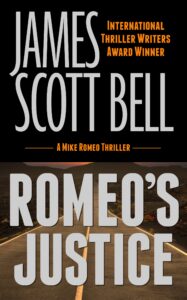by James Scott Bell
@jamesscottbell

Colin Clive in Frankenstein
In the classic Universal horror movie Frankenstein, Colin Clive, overacting as Dr. Frankenstein, shouts, “IT’S ALIVE! IT’S ALIIIIIIVE!” He’s thrilled to the core when his creation takes on real life.
The doc was onto something. Isn’t that how you feel when your character starts to come alive as you write?
While there are many aspects of great character work, I think the following three features are always present.
1. Attitude
Compelling characters have a way of looking at the world that is uniquely their own. This is attitude, and done well it sets them apart from every other fictional creation.
If you are writing in first-person point of view, attitude should permeate the voice of the narrator. Julianna Baggott’s Lead in Girl Talk, Lissy Jablonski, is smart, witty and a bit cynical. She describes an old boyfriend:
He’d been a ceramics major because he wanted to get dirty, a philosophy major because he wanted to be allowed to think dirty, a forestry major because he wanted to be one with the dirt, and a psychology major because he wanted to help people deal with their dirt. But nothing suited him.
We learn a lot about Lissy from her singular voice. One thing she’s not is dull.
A third-person character shows attitude primarily through dialogue and thoughts. In L.A. Justice we’re given a look into the head of Nikki Hill, the deputy D.A. who is the Lead in the Christopher Darden/Dick Lochte legal thriller. In one scene she reacts to her superior, the acting D.A. He’s a man of two personalities she had labeled “Dr. Jazz” and “Mr. Snide.” In the office he was the latter, bent and dour, with an acid tongue and total lack of social grace . . . At the moment, he was definitely in his Mr. Snide mode.
This is a quick look at Nikki’s attitude toward authority, which continues to be developed in the novel.
The best way to find your character’s unique views is to listen. You do this by creating a free-form journal in the character’s voice. It’s okay if you don’t know what the voice is going to sound like when you start. Keep writing, fast and furious, in ten to twenty minute stretches. A voice will begin to emerge.
Have the character to pontificate on such questions as:
- What do you care most about in the world?
- What really ticks you off?
- If you could do one thing, and succeed at it, what would it be?
- What people do you most admire, and why?
- What was your childhood like?
- What’s the most embarrassing thing that ever happened to you?
Let the answers come in any form, without editing. Your goal is not to create usable copy (though you certainly will find some gems). Rather, you want to get to know, deeply, the character with whom you’re going to spend an entire novel.
2. Courage
A great novel, I say again, is the record of how a character overcomes some form of death—physical, professional, or psychological. Which means the Lead has to have guts.
In Rose Madder, Stephen King gives us a Lead who is weak and vulnerable—a terribly abused wife. In the Prologue we see Rose Daniels, pregnant, savagely beaten by her husband. The section ends, Rose McClendon Daniels slept within her husband’s madness for nine more years.
Chapter One begins with Rose, bleeding from the nose, finally listening to the voice inside her that says leave. She argues with herself. Her husband will kill her if she tries. Where will she go? But finally she works up the courage to open the front door and take her first dozen steps into the fogbank which was her future.
Every step she takes now requires courage. Rose is unprepared for dealing with the outside world, with simple things like getting a bus ticket or a job. And all the while she knows her husband is going to be tracking her. Still, she moves forward, and we root for her.
3. Surprises
A character who never surprises us is dull by definition.
Surprising behavior often surfaces under conditions of excitement, stress or inner conflict. Archie Caswell, the 14-year-old protagonist of Han Nolan’s When We Were Saints, is torn about his experience of the divine. Alone on a mountain he dug his hands into the ground beneath him, pulling up pine needles and dirt. He threw it at the trees. He picked up some more and threw it, too. He berates God, then asks God’s forgiveness.
It’s completely unexpected behavior from a heretofore normal, troublemaking kid. And bonds us to him all the more.
When your character has an emotional reaction, don’t choose the first one that comes to mind. That’ll be expected. Brainstorm. Make a surprise.
If you plumb the depths of your characters’ lives by exploring these three aspects, your fiction will truly come ALIIIIIIVE!
What do you do to bring life to your characters?








 Norah tell him, “Let me guess. You’re also doing a Die Hard retrospective for your new book.”
Norah tell him, “Let me guess. You’re also doing a Die Hard retrospective for your new book.”










 We often talk about a character’s backstory, including a “wound” that haunts as a “ghost” in the present. It’s a solid device, giving a character interesting and mysterious subtext at the beginning. The wound is revealed later as an explanation. (Think of Rick in Casablanca. “I stick my neck out for nobody” and his casual using of women. The wound of Ilsa’s “betrayal” doesn’t become clear until the midpoint).
We often talk about a character’s backstory, including a “wound” that haunts as a “ghost” in the present. It’s a solid device, giving a character interesting and mysterious subtext at the beginning. The wound is revealed later as an explanation. (Think of Rick in Casablanca. “I stick my neck out for nobody” and his casual using of women. The wound of Ilsa’s “betrayal” doesn’t become clear until the midpoint).
